This article originally appeared in Spanish at El Diario.
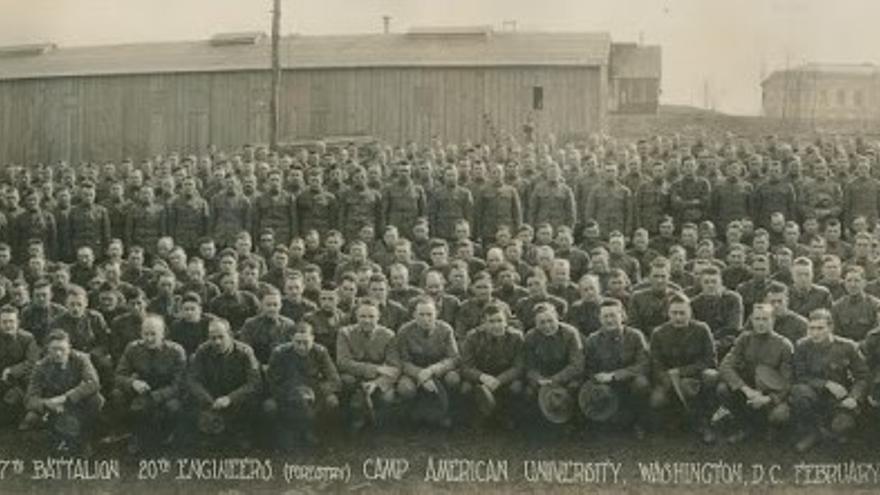
At 36 years old, the Zuberoan Jean Pierre Laxalt Etchart found himself in Ardentes, in central France — about 650 kilometers from his hometown of Aloze — immersed in the Great War of 1914 that would devastate part of the country. The difference from his peers regarding his participation in the conflict was that Jean Pierre was recruited by the United States Army, a country in which he had lived since 1902. He returned to defend France in March 1918, for the first time (and last) time since his departure, 16 years earlier. He was one of the “Fighting Foresters” of the Engineer Regiment — the largest regiment that ever existed in the US Army. During the same period of time, in one of those fearsome trench on the fronts, was the French Army soldier Jean Michel (Alpetche) Bassus, born in 1894 in Buenos Aires, Argentina, of parents from Nafarroa Beherea, and whose life would intertwine unpredictably with those of the Laxalts in the not too distant future.
“Echoes of two wars, 1936-1945” aims to disseminate the stories of those Basques and Navarrese who participated in two of the warfare events that defined the future of much of the 20th century. With this blog, the intention of the Sancho de Beurko Association is to rescue from anonymity the thousands of people who constitute the backbone of the historical memory of the Basque and Navarre communities, on both sides of the Pyrenees, and their diasporas of emigrants and descendants, with a primary emphasis on the United States, during the period from 1936 to 1945.
THE AUTHORS
Guillermo Tabernilla is a researcher and founder of the Sancho de Beurko Association, a non-profit organization that studies the history of the Basques and Navarrese from both sides of the Pyrenees in the Spanish Civil War and in World War II. He is currently their secretary and community manager. He is also editor of the digital magazine Saibigain. Between 2008 and 2016 he directed the catalog of the “Iron Belt” for the Heritage Directorate of the Basque Government and is, together with Pedro J. Oiarzabal, principal investigator of the Fighting Basques Project, a memory project on the Basques and Navarrese in the Second World War in collaboration with the federation of Basque Organizations of North America.
Pedro J. Oiarzabal is a Doctor in Political Science-Basque Studies, granted by the University of Nevada, Reno (USA). For two decades, his work has focused on research and consulting on public policies (citizenship abroad and return), diasporas and new technologies, and social and historical memory (oral history, migration and exile), with special emphasis on the Basque case. He is the author of more than twenty publications. He has authored the blog “Basque Identity 2.0” by EITB and “Diaspora Bizia” by EuskalKultura.eus. On Twitter @Oiarzabal.
Josu M. Aguirregabiria is a researcher and founder of the Sancho de Beurko Association and is currently its president. A specialist in the Civil War in Álava, he is the author of several publications related to this topic, among which “La batalla de Villarreal de Álava” (2015) y “Seis días de guerra en el frente de Álava. Comienza la ofensiva de Mola” (2018) stand out.
After his demobilization, Jean Pierre resumed his life as a sheep herder in Nevada. His brothers, Pierre and Dominique Laxalt Etchart, who came to the United States in 1904 and 1906, respectively, had previously and successfully accompanied him in his work for a few years starting in 1910. Both had been born in Liginaga; Pierre, in 1878, and Dominique in 1886. In 1914, Pierre “Pete” Laxalt Etchart married Marie “Mary” Ucarriet, born in 1892 in Aldude, Nafarroa Beherea, and arrived in the United States with her parents in 1912. They had four children: Gabriel “Gabe” Peter (1915-1979), Adelle Marie (1917-2003), Robert John (1920-1972) and Lucille Catherine (1921-1980). Three of them, Gabriel, Robert and Lucille took an active part in World War II (WWII).
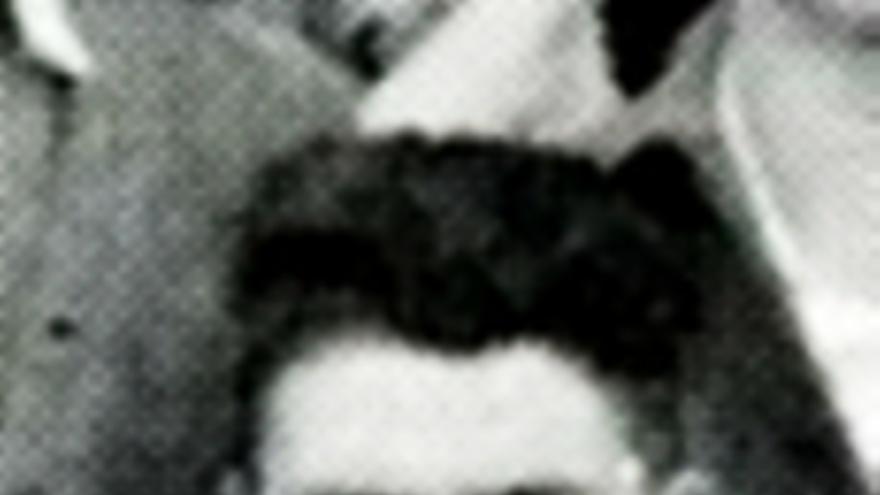
Gabriel and Robert enlisted in the Air Force in 1941. Gabriel Laxalt Ucarriet did so eight months before the attack on Pearl Harbor, while Robert Laxalt Ucarriet volunteered two days after the Japanese attack. Gabriel was assigned to the maintenance personnel of the air fleet, and served at the end of the war in the 534th Air Service Group, being licensed with the rank of sergeant in 1945. Robert was assigned to the Icelandic Base Command, established by the US Army on July 7, 1941 for the defense of the island and as a strategic point between Europe and North America. There he remained throughout the conflict.
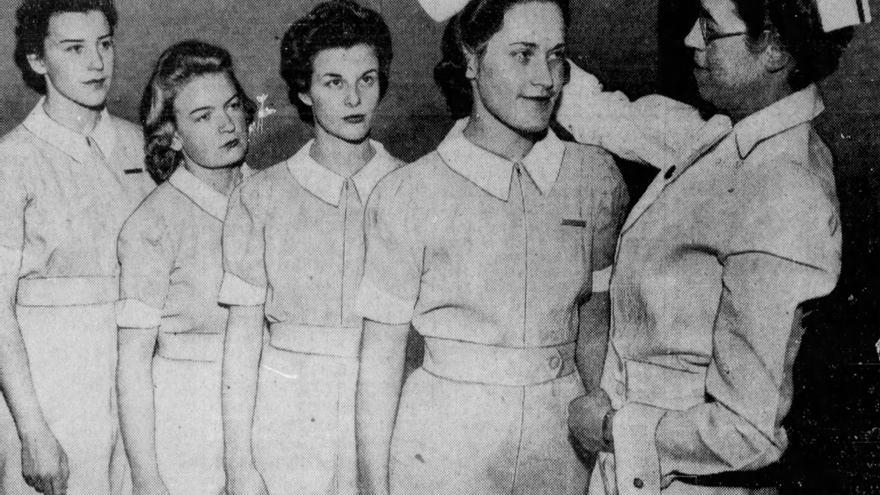
In August 1941, Lucille Laxalt Ucarriet enrolled at the Children’s Hospital in San Francisco, California, to train as a nurse. While in nursing school, Lucille was admitted to the US Cadet Nurse Corps on July 1, 1943, the date of its creation by the US Congress. They aimed to train nurses for the armed forces and government and civilian hospitals. More than 124,000 nurses who enrolled in this federal program graduated during the course of the war to fill the severe shortage of nurses, both at home and abroad. The government again required the active participation of women, but not on the same terms of equality as men. As of today, the women of the Cadet Nurse Corps are the only ones of all the uniformed service men and women that served in WWII that have yet to be recognized as war veterans by the US government.
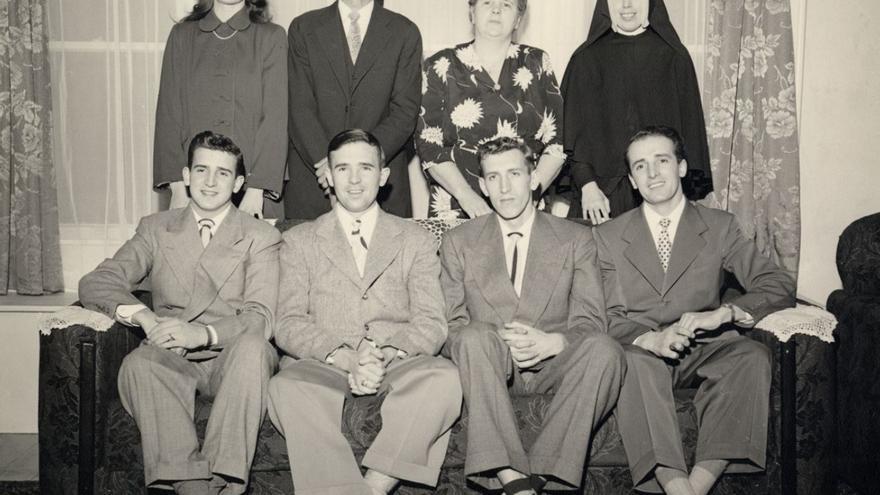
In December 1920, a young woman of 29 years old from Nafarroa Beherea, Therèse Alpetche Bassus, arrived at the Port of New York from Bordeaux, France, where her family managed the Hotel Amerika and one of the first travel agencies between Europe and the Americas. Therèse “Theresa,” born in 1891 in Baigorri, Nafarroa Beherea, was destined for San Francisco. It was in this city, at the Hotel España, owned by a Basque family, where her brother Jean Michel resided, who, after the end of the Great War, had arrived in October 1919, following in the footsteps of his brother Maurice, a resident of USA since 1914. Jean Michel was dying from the effects of a poison gas attack used during the war. Therèse’s goal was to return to France with her brother. Unfortunately, Jean Michel died in 1921 and was buried in Reno, Nevada, where his sister erected a monolith in his memory. Therèse decided to stay in the country, marrying Dominique Laxalt Etchart shortly after. They had six children: Paul Dominique (1922-2018), Robert Peter “Bob” (1923-2001), Suzanne Marie (Sister Mary Robert of the Order of the Holy Family; 1925-2019), John Maurice (1926-2011), Marie Aurelie (1928-2019) and Peter Dominique “Mick” (1931-2010).
Like their cousins, three of the Laxalt-Alpetche brothers also contributed to the war effort. Paul Dominique Laxalt Alpetche was drafted in 1942 and, for three long years — 18 months these abroad — he served in the Army Medical Corps (a non-combatant unit), until his discharge with the rank of sergeant. It was during the Battle of Leyte, in the Philippines, where he took care of a young Basque-Nevadan officer, Leon Etchemendy Trounday (a hero of the Aleutians), who was seriously wounded. “Too much blood, too many wounded, and soldiers dying,” Paul would write, decades later, in his memoirs (1). Paul was later elected Lieutenant Governor of Nevada (1962-1964), Governor of Nevada (1967-1971), and finally US Senator for the State of Nevada (1974-1987). Paul became the first Basque senator in American history. He was the right hand and close friend of President Ronald Reagan. Paul was buried with military honors at Arlington National Cemetery, Virginia.
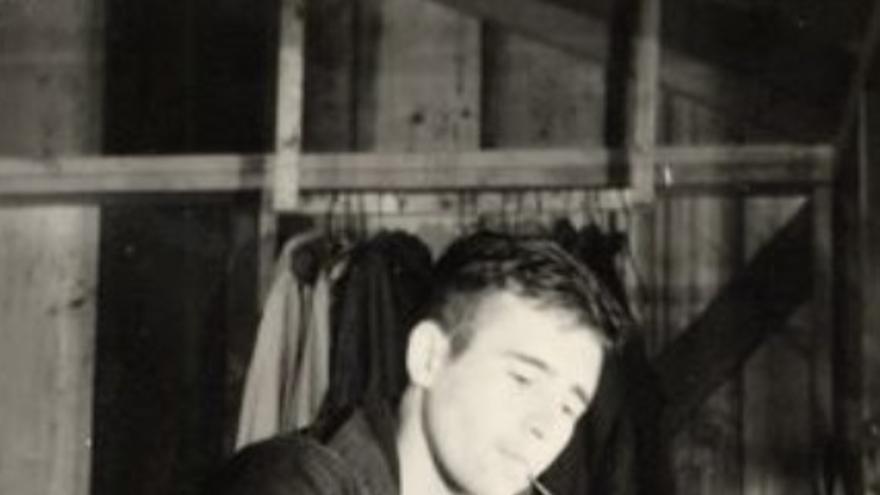
His brother Robert Laxalt Alpetche interrupted his studies to enlist in the army. However, he was not accepted due to a slight heart murmur. Through family political connections, Robert finally landed a job with the State Department Diplomatic Service in Washington DC. He was assigned as a code officer to the Diplomatic Legation and sent to the Belgian Congo in 1944. He served in a jungle outpost in the context of a secret spy war between the Allies (the Office of Strategic Services, the current CIA) and the Germans for control of a mine in Katanga province that produced a little-known (at the time) mineral called uranium — the essential ingredient of the atomic bomb (2). Robert fell ill with malaria and was sent home in March 1945. He was 21 years old. In 1951, Robert accompanied his father to his birthplace for the first time after 47 years as a sheep herder in Nevada and Northern California. Based on his father’s story, he wrote Sweet Promised Land (1957), his second novel, and one of his best-known books. Robert founded the University of Nevada Press in 1961 and was its director until 1983. Together with William A. Douglass and Jon Bilbao they founded the Basque Studies Program at the University of Nevada in 1967. Robert was a prolific writer of fiction and nonfiction. He became the “voice of the Basques” in the American West (3).
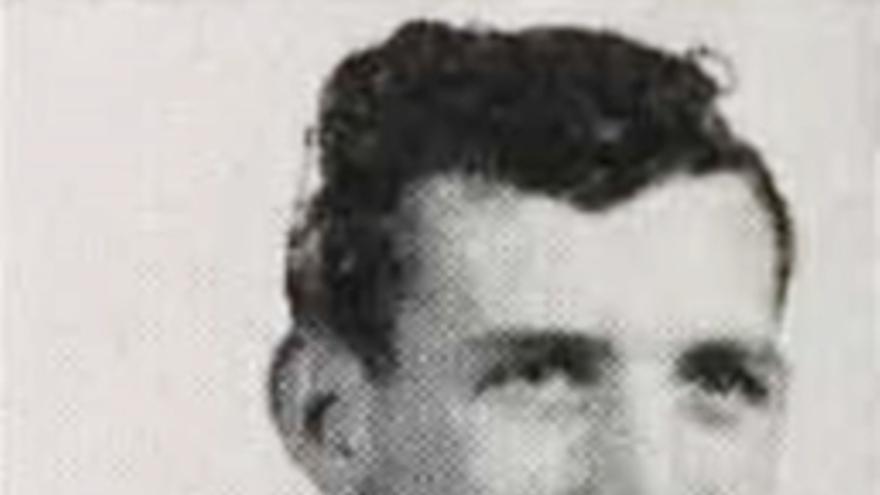
Near the end of the war, John Maurice Laxalt Alpetche was drafted by the Navy, serving on board the munitions ship USS Mount Katmai in the Western Pacific. He graduated with a second-class administrative degree in July 1946. He left his law firm to participate in his brother Paul’s election campaigns, later settling in Washington DC.
Paul’s death in 2018 at the age of 96, and that of Suzanne Marie (Sister Mary Robert), in October of the next year at the age of 94, marked the end of the first Basque generation of the Laxalts born in the USA. The Laxalt-Ucarriets, although they died relatively young, left behind a legacy of overcoming and defending freedoms that today we try to preserve at all costs. The Laxalt-Alpetches, perhaps the most visible face of this extraordinary Basque-American family, are possibly the paradigm of a history of successful emigration, of struggle for survival, and of the social, economic and political conquest of a family in one generation. They made the American Wild West, and especially Nevada, their home, a value that the Laxalts continue to treasure to this day with great zeal.
If you want to collaborate with “Echoes of Two Wars,” send us an original article on any aspect of the WWII or the Spanish Civil War and the Basque or Navarre participation to the following email: sanchobeurko@gmail.com
Articles selected for publication will receive a signed copy of “Basque Combatants in World War II”.
(1) Laxalt, Paul. (2000). Nevada’s Paul Laxalt. To Memoir. Reno, Nevada: Jack Bacon & Co.
(2) Robert Laxalt wrote in 1998 about his adventures in the Belgian Congo during the WWII, under the title, A Private War: An American Code Officer in the Belgian Congo. (Reno: University of Nevada Press).
(3) Rio, David. (2007). Robert Laxalt: The voice of the Basques in American literature. Reno: Center for Basque Studies, University of Nevada, Reno.
Discover more from Buber's Basque Page
Subscribe to get the latest posts sent to your email.

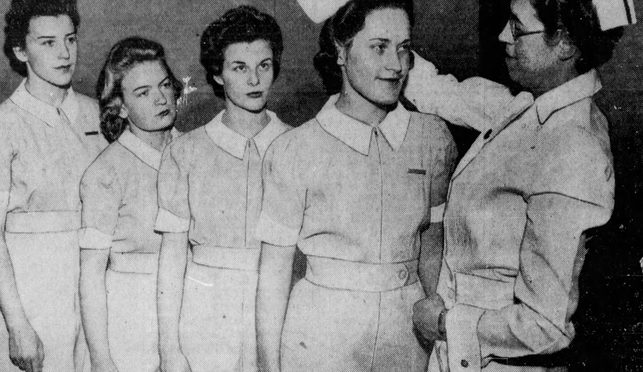

3 thoughts on “Fighting Basques: The Laxalts, a Basque Family Serving the United States, 1941-1945”